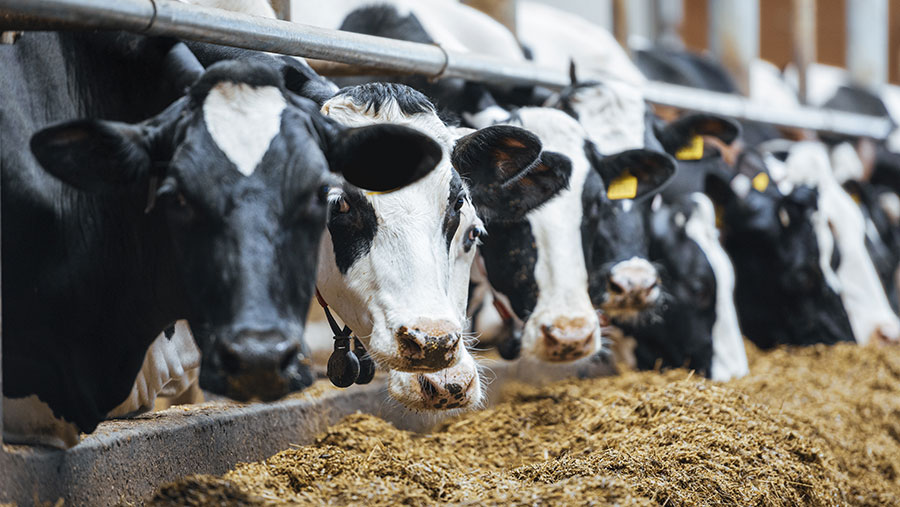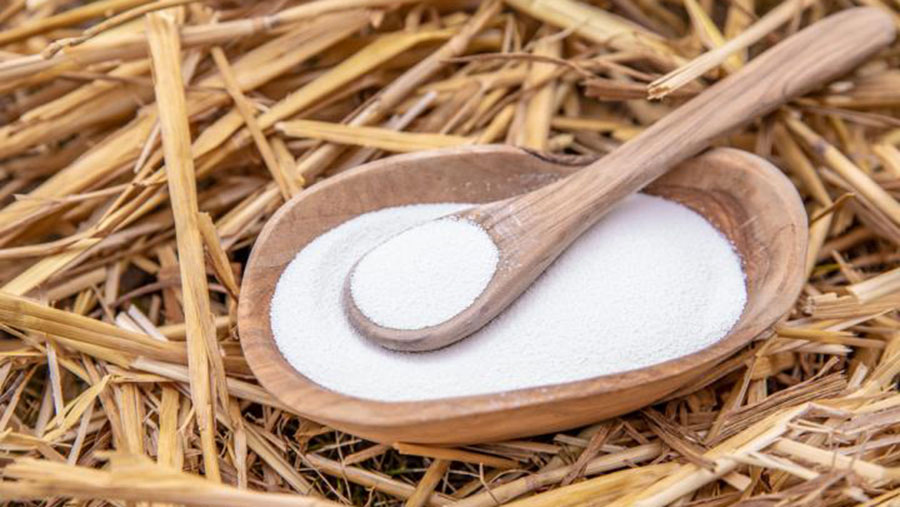Study finds best dosage for methane-cutting additive
 © Adobe Stock
© Adobe Stock Scientists have got closer to understanding the optimal level at which a methane-reducing feed additive could be included in commercial dairy cattle diets.
The substance 3-Nitrooxypropanol (3-NOP) cuts methane emissions by 36% when included in diets at 100-200mg/kg, with 150mg/kg being optimal and milk fats being higher.
Methane emissions were 16-36% lower across a range of 3-NOP inclusion levels during the Penn State University trial.
See also: Opinion: Time to reward farmers for cutting methane emissions
No dry matter intake or yield change was reported.
Researchers hope the relatively low dosage rate will make the compound affordable, but stress that its manufacturer – Dutch feed giant DSM – is yet to set a price.
What is 3-NOP?

- 3-Nitrooxypropanol is an organic compound
- The compound inhibits the enzyme methyl coenzyme M reductase, which is critical in the final step of methanogenesis – the production of methane
- It is known to reduce methane production in ruminants
- It looks like a fine, white, grainy powder
The study
A population of 49 cows were fed a total-mixed ration in which 3-NOP was included at 40mg, 60mg, 80mg, 100mg, 150mg and 200mg/kg on a dry matter basis.
Methane, carbon dioxide and hydrogen were measured after a 14-day adaptation period.
Milk fat concentration increased due to higher concentrations of de novo synthesize short-chain fatty acids in the milk.
Previous work found milk fat percentage hit 4.35% in milk from cows fed 3-NOP-treated diets compared to 4.05% from conventional diets.
Climate change
Professor of dairy nutrition Alex Hristov said the issue of cows belching had been derided in the US, but was taken much more seriously in other countries.
“I think it’s a fine line with the politics surrounding this subject.
“Do we want to look at this? I definitely think that we should, and if there is a way to reduce emissions without affecting profitability on the farm, we should pursue it.”
He stressed that the public would need to accept the feed additive, adding that 3-NOP was a very small synthetic molecule that is metabolised quickly and fall apart into compounds that are naturally present in the rumen.
